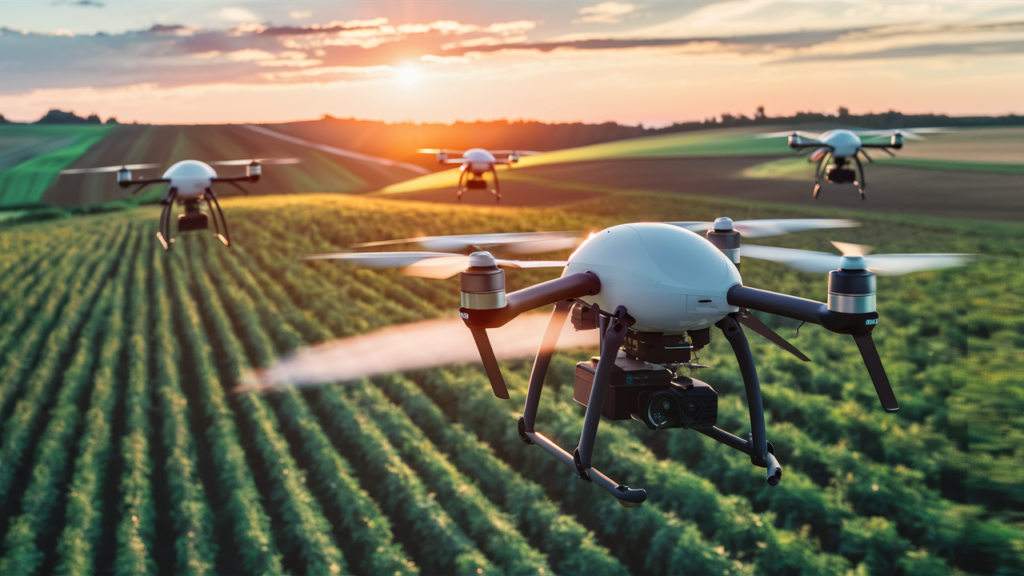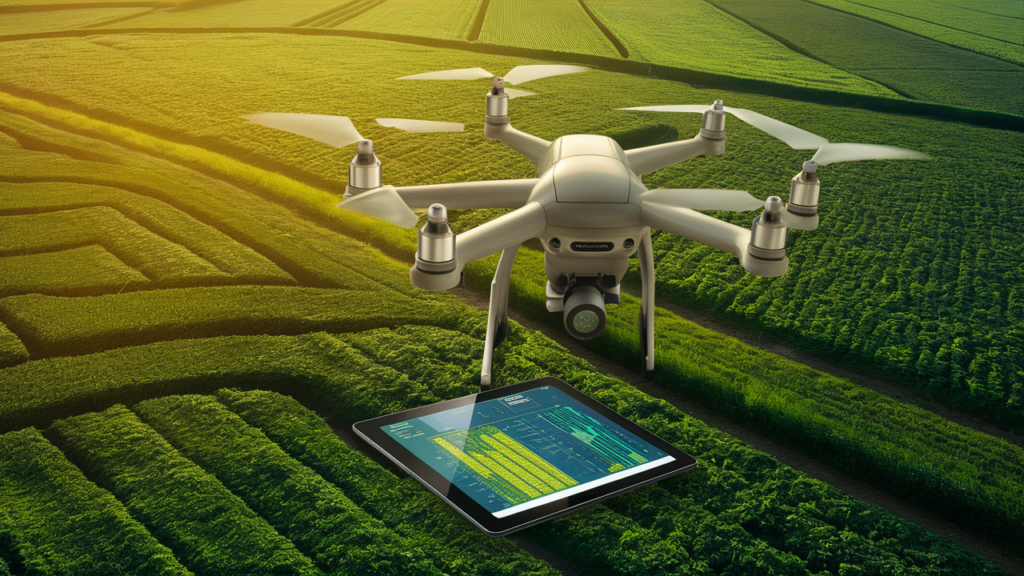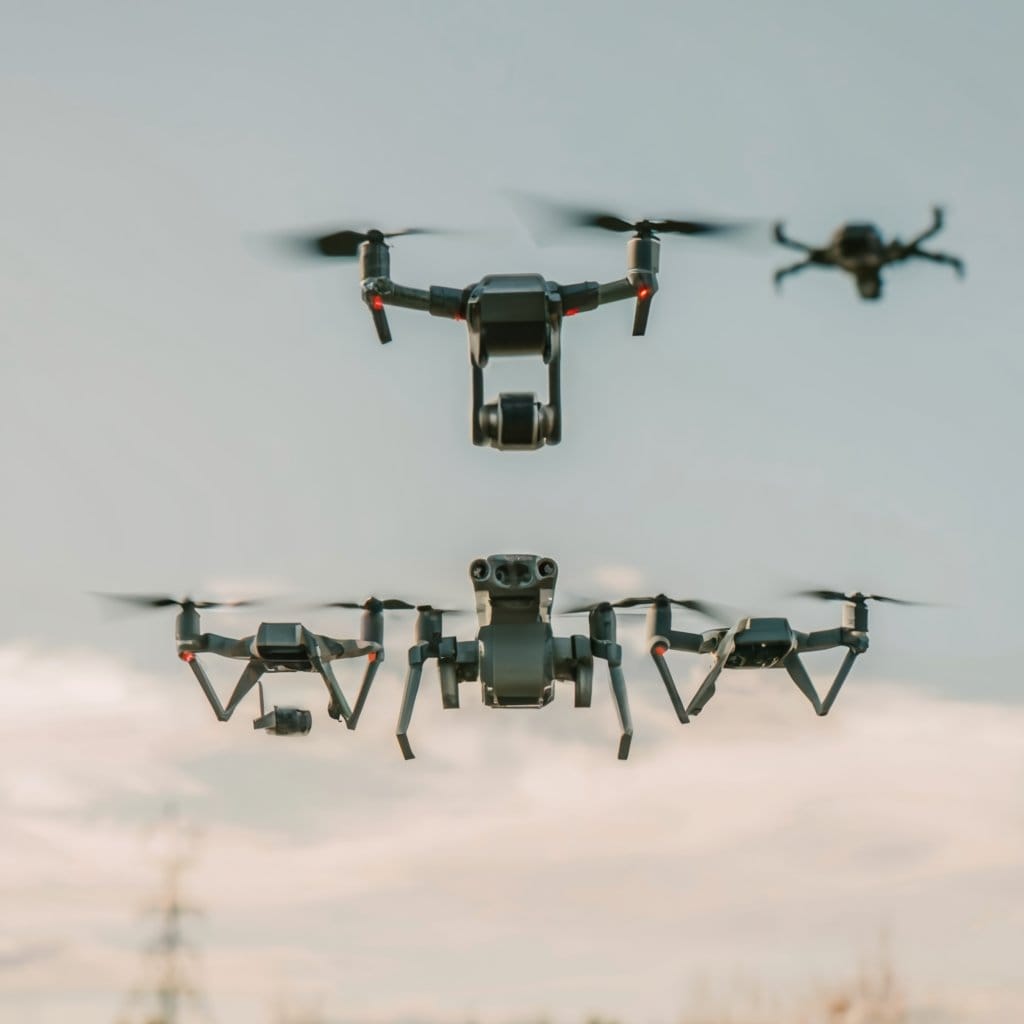Unleashing a new era in agriculture, agricultural drones are revolutionizing farming practices worldwide. These high-tech devices offer farmers unparalleled precision and efficiency in crop monitoring, spraying, and mapping. By providing real-time data on crop health, soil conditions, and irrigation needs, agricultural drones empower farmers to make informed decisions swiftly. The ability to cover vast areas quickly and identify issues early on ensures optimal crop management and increased yields. Stay tuned as this blog delves into the transformative impact of agricultural drones on modern farming practices.

Key Takeaways
- Utilize Drones for Efficient Farm Management: Consider employing drones for crop monitoring, pest control, and irrigation management to streamline agricultural operations.
- Incorporate Drone Technology for Detailed Inspections: Leverage drone technology for in-depth farm inspections, enabling quick identification of crop health issues and precise data collection.
- Optimize Crop Production with Drone Assistance: Enhance commercial crop yields by using drones for aerial seeding, spraying fertilizers, and monitoring plant health throughout the growing season.
- Explore Diverse Applications of Drones in Agriculture: Explore the various applications of drones in agriculture, such as soil analysis, mapping, and livestock monitoring, to maximize productivity and efficiency.
- Reap the Benefits of Agricultural Drones: Enjoy advantages like increased crop yields, reduced operational costs, and improved decision-making by integrating agricultural drones into your farming practices.
- Stay Informed About Drone Innovations: Keep abreast of advancements in drone technology and their applications in agriculture to continually optimize farm processes and stay competitive in the industry.
Role of Drones in Agriculture
Boosting Crop Production
Drones enhance crop production by providing farmers with real-time data on soil conditions and crop health. They help optimize planting patterns, leading to increased yields. Drones assist in identifying areas that require more attention, thus improving overall crop quality.
- Real-time data
- Optimize planting patterns
- Identify areas needing attention
Precision Farming Techniques
Through precision farming techniques, drones enable farmers to apply fertilizers, pesticides, and water with pinpoint accuracy. This results in reduced wastage of resources and minimizes environmental impact. By precisely targeting inputs, farmers can achieve higher efficiency in their operations.
- Pinpoint application of inputs
- Reduced resource wastage
- Minimized environmental impact
Monitoring Crop Health
Drones play a crucial role in monitoring crop health by capturing detailed images of fields from above. This aerial imagery helps detect early signs of pest infestations, diseases, or nutrient deficiencies. By identifying issues promptly, farmers can take timely action to prevent widespread damage and ensure healthy crops.
- Detailed field images
- Early detection of issues
- Timely preventive actions
Irrigation Management
In irrigation management, drones aid in assessing moisture levels across fields accurately. By analyzing this data, farmers can implement precise irrigation schedules tailored to the specific needs of different areas within a field. This targeted approach leads to optimized water usage and promotes sustainable farming practices.
- Accurate moisture assessment
- Tailored irrigation schedules
- Optimized water usage
Drone Technology in Farm Inspections
Imaging Technologies
Drones equipped with high-resolution cameras are revolutionizing farm inspections by providing detailed aerial imagery. These images capture crop health indicators such as plant stress, water levels, and pest infestations. Farmers can identify issues early and take targeted action to improve yields.
- High-resolution cameras capture crop health indicators
- Detailed aerial imagery helps in identifying plant stress, water levels, and pest infestations
The multispectral imaging capabilities of agricultural drones enable farmers to go beyond visual inspection. By capturing data across various wavelengths, these drones can detect subtle differences in crop health that are invisible to the naked eye. This technology aids in precision agriculture practices, leading to more efficient resource management.
Data Analysis Tools
Advanced data analysis tools process the vast amount of information collected by agricultural drones. Through machine learning algorithms, these tools analyze crop data to provide insights on plant health, growth patterns, and yield forecasts. Farmers can make data-driven decisions to optimize their farming practices.
- Machine learning algorithms analyze crop data for insights
- Data analysis tools provide information on plant health, growth patterns, and yield forecasts
Cloud-based platforms allow farmers to store and access their drone-collected data securely. These platforms offer real-time monitoring capabilities, enabling farmers to track changes in their fields remotely. By leveraging cloud technology, farmers can streamline their operations and make informed decisions based on up-to-date information.
GPS and Mapping
Integrated GPS technology enables agricultural drones to navigate fields accurately and collect geospatial data with precision. By creating digital maps, drones help farmers monitor field conditions, plan irrigation systems, and assess crop performance over time. This mapping capability enhances overall farm management efficiency.

- GPS technology allows drones to navigate fields accurately
- Drones create digital maps for monitoring field conditions and assessing crop performance
Enhancing Commercial Crops with Drones
Yield Optimization
Drones play a crucial role in enhancing commercial crop yields by providing farmers with real-time data on crop health and growth. Farmers can use this data to make informed decisions regarding irrigation, fertilization, and overall crop management. By analyzing aerial images captured by drones, farmers can identify areas of the field that require attention, leading to optimized resource allocation.
- Real-time data for informed decisions
- Identifying areas needing attention
- Optimized resource allocation
Pest Control
Agricultural drones contribute significantly to pest control by enabling farmers to monitor their fields regularly. Drones equipped with thermal imaging cameras can detect variations in crop temperature caused by pest infestations. This early detection allows farmers to take immediate action, such as targeted pesticide application, reducing the spread of pests and minimizing crop damage.
- Regular monitoring for pest detection
- Early detection through thermal imaging
- Targeted pesticide application
Disease Detection
With the advancement of drone technology, farmers can now detect diseases in commercial crops promptly. Drones equipped with multispectral cameras can capture detailed images of crops, highlighting any signs of disease or stress. By analyzing these images, farmers can identify infected areas early on and implement preventive measures, such as adjusting irrigation or applying specific treatments, to contain the spread of diseases.
- Prompt disease detection through detailed imaging
- Early identification for preventive measures
- Containment of disease spread through timely actions
Applications in Agriculture
Soil and Field Analysis
Agricultural drones play a crucial role in soil and field analysis by providing farmers with detailed information on soil health and field conditions. These drones are equipped with sensors that can measure parameters like soil moisture, pH levels, and nutrient content. Farmers can use this data to make informed decisions about irrigation, fertilization, and crop management.
Pros:
- Precision agriculture techniques
- Increased efficiency in farming practices
Cons:
- Initial investment costs
- Training required for operation
Planting Strategies
When it comes to planting strategies, agricultural drones offer valuable assistance by helping farmers optimize seed planting patterns. Drones can accurately sow seeds at precise locations based on soil analysis data. This ensures optimal plant spacing, leading to improved crop yields and reduced wastage of resources like seeds and fertilizers.
Key Information:
- Seed planting precision
- Resource optimization
Crop Surveillance
Crop surveillance is another key area where agricultural drones excel. Drones equipped with high-resolution cameras can monitor crop growth, detect pest infestations, diseases, or nutrient deficiencies early on. This real-time data allows farmers to take timely action to protect their crops and maximize yields.
Examples:
- Early pest detection
- Disease prevention measures
Harvest Planning
In the realm of harvest planning, drones provide invaluable support by assessing crop maturity levels across fields. By capturing aerial images and using multispectral imaging technology, drones can identify areas ready for harvest. This information enables farmers to plan their harvesting schedules efficiently, ensuring optimal timing for each crop.
- Improved yield forecasting
- Enhanced operational efficiency
Benefits of Agricultural Drones
Time Efficiency
Agricultural drones significantly reduce the time required for various farming tasks such as crop monitoring and spraying. By swiftly covering large areas, drones enable farmers to assess the condition of their crops in a fraction of the time it would take using traditional methods. This results in quicker decision-making and timely interventions to address any issues that may arise.
- Swift coverage of large areas
- Quick assessment leading to rapid decision-making
Cost Reduction
The use of agricultural drones leads to cost savings by optimizing resources like water, fertilizers, and pesticides. Through precise application based on data collected by drones, farmers can avoid overusing these resources, thereby reducing wastage and expenses. Drones help in identifying problem areas early, preventing potential losses.
- Optimization of resources
- Early identification of problem areas
Increased Accuracy
Agricultural drones offer enhanced precision in various farming activities. With advanced sensors and imaging capabilities, drones provide detailed information about crop health, soil conditions, and pest infestations. This high level of accuracy allows farmers to implement targeted solutions effectively, leading to improved yields and overall farm productivity.
- Detailed information on crop health
- Targeted solutions for improved yields
Environmental Sustainability
The integration of agricultural drones promotes environmental sustainability through reduced chemical usage and minimized environmental impact. By enabling precise application of inputs like pesticides and fertilizers only where needed, drones help minimize pollution and soil degradation. This sustainable approach supports long-term soil health and biodiversity conservation.
- Reduced chemical usage
- Minimized environmental impact
Closing Thoughts
The role of drones in agriculture is undeniably transformative. From farm inspections to enhancing commercial crops, tAgricultural Droneshe applications of agricultural drones are vast and promising. The benefits they offer in terms of efficiency, precision, and data collection are revolutionizing the way farming is approached.
As the agricultural sector continues to embrace technological advancements, integrating drones into everyday practices will become increasingly common. Farmers and industry professionals should explore the diverse applications of drones in agriculture to optimize operations and yield better results. Embracing this technology can lead to increased productivity, reduced costs, and more sustainable farming practices.



